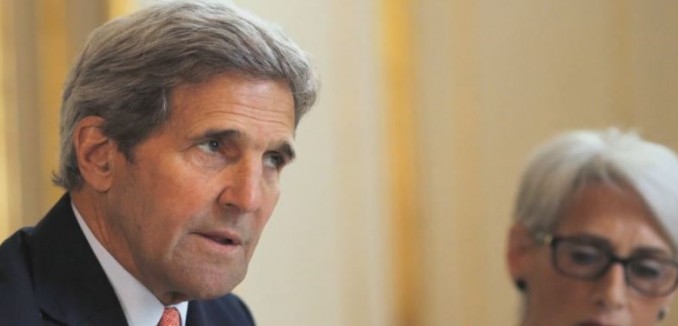Bilateral negotiations between Secretary of State John Kerry and Iranian Foreign Minister Mohammad Javid Zarif resumed today in Vienna, amid continuing fallout from a Tuesday speech by Iranian Supreme Leader Ayatollah Ali Khamenei, in which the country’s top authority set down a range of red lines backsliding from parameters agreed to by the parties in an April 2 framework announcement. Khamenei rejected, among other conditions, access by inspectors to Iranian military facilities where the Iranians may be conducting atomic work, restrictions on centrifuge research and development the Iranians may want to conduct to speed production of weapons-grade uranium, a schedule for sanctions relief that would be tied to Iranian compliance, and medium-term caps on Iranian uranium production.
Negotiators face a self-imposed June 30 deadline, though multiple parties—including the French, the Israelis, and American lawmakers—have urged Washington to let the date slide in order to secure a good deal. Concerns have grown in recent weeks that the administration is collapsing on key conditions in an effort to entice the Iranians to agree before the deadline.
The Associated Press revealed three weeks ago that the Obama administration would allow Iran to receive significant sanctions relief without the Iranians detailing the full scope of their nuclear program, and more specifically the atomic work conducted by their military—the so-called possible military dimensions (PMDs) of Iran’s nuclear program. The demand had long been considered a prerequisite for a verifiable Iran deal.
Experts have long argued that the UN’s nuclear watchdog, the International Atomic Energy Agency, must know the extent of Iran’s past work, in order to establish a baseline of Tehran’s nuclear program, confirm that the Iranians are complying with whatever conditions they’ve agreed to comply with, and calculate how quickly the Iranians could construct a nuclear device by working backwards from how close they came to one last time.
Eighteen top analysts—including five former Obama advisors who have played central roles in the President’s Iran policy—published an open letter worrying that American concessions, including prominently the concession regarding PMDs, now mean that a deal threatens to fall short of the administration’s goals.
These concerns go back to the beginning of the negotiation process. Washington Institute Managing Director Michael Singh described this issue almost a year ago in the aftermath of the implementation of the interim Joint Plan of Action:
Without insight into the full extent of Iran’s clandestine nuclear activities, no amount of monitoring and inspection can provide true confidence that Iran lacks a parallel program beyond inspectors’ view. A final agreement must sharply curtail the nuclear capacity left in place by this first diplomatic step and require Iran to come clean on the full range of past and present nuclear work by all Iranian entities.
David Albright, President of the Institute for Science and International Security, recently outlined why full Iranian disclosure is necessary for scientists and analysts to accurately calculate how long it would take the Iranians to rush to a bomb, the risk that a final deal is ostensibly aimed at forestalling:
It is critical to know whether the Islamic Republic had a nuclear-weapons program in the past, how far the work on warheads advanced and whether it continues. Without clear answers to these questions, outsiders will be unable to determine how fast the Iranian regime could construct either a crude nuclear-test device or a deliverable weapon if it chose to renege on an agreement.
[Photo: Wochit World / YouTube]




